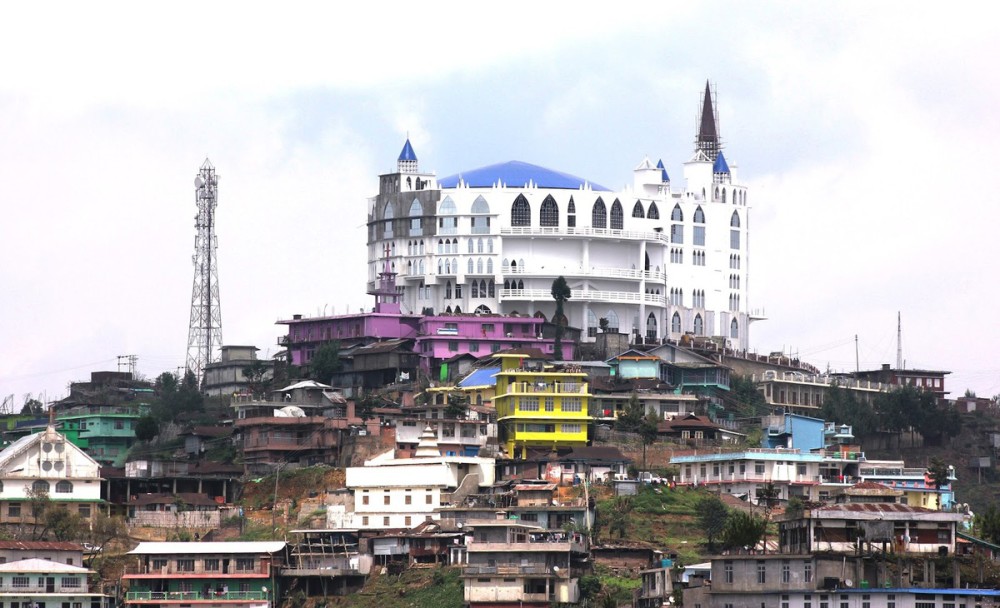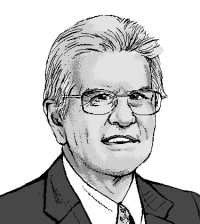The most Baptist state isn’t Mississippi. It’s Nagaland, India.
In the remote northeast region, Christianity has flourished for generations.

India has a striking number of Christian megachurches. Most are in the thriving commercial cities of the south. But there is also massive new structure in the country’s far northeast, at Zünheboto in the remote, poor state of Nagaland. Dedicated in 2017, the nine-story Sümi Baptist Church notionally seats 8,500, but weekly attendance is 10,000. It is claimed as the largest church building in the whole of Asia. It illustrates a dramatic story of conversion of a kind that fulfills the wildest dreams of so many Western evangelical missionaries through the centuries, of spreading the faith to what they called “unreached people groups.”
The Naga people, who straddle the lands that became India and Myanmar, differ greatly in language and culture from familiar Indian patterns. Their languages belong to the Sino-Tibetan family, and they long pursued a tribal warrior culture, earning them the reputation of ferocious headhunters famous for their use of poisoned arrows. During World War II, British forces fighting the Japanese in Burma were delighted to have the Nagas as loyal allies. Kohima, now a major Naga city, was the setting for a legendarily bloody Allied victory. (My father, like many Brits who fought in these campaigns, spoke of the Nagas with something like adoration.) Today, there are several million Nagas, with the largest concentration in Nagaland, with its 2 million residents.
Read our latest issue or browse back issues.
As members of an animist faith, rather than organized Hinduism, the Nagas seemed a promising prospect for 19th-century Protestant missionaries. In the 1870s, the American Baptists Edward W. Clark and Mary Mead Clark began a mission in the region, opening their first church in 1872. The Clarks stressed that although their skins were white, their American identity set them apart from the imperial British authorities—they weren’t spies. The distinction was initially tough to convey but ultimately successful.
After a time of slow growth, Christianization exploded following the ruinous effects of World War II and the highly destructive activities of the Japanese military and their Indian Nationalist allies. The wrecking of that older culture demanded a throughgoing reconstruction, in which Christians played a central role. A series of far-reaching revivals followed in the 1950s and 1960s, and a local Great Awakening began in Kohima in 1962, marked by “signs and wonders.” As so often in preliterate societies, hymns played a central role in spreading faith and teaching Christian doctrines.
But secular visions also played their role, as Christianity became a badge of Naga national and cultural identity against an overbearing Indian state. Ever since Indian independence in 1947, Nagas have dreamed of a breakaway national Republic of Nagalim, and Christian symbols and beliefs are prevalent among the area’s highly active nationalist guerrilla and insurgent movements. (Historian John Thomas recounts this story in his 2016 book Evangelising the Nation.)
By the end of the century, Nagaland had become more than 90 percent Christian. By far the largest denomination is Baptist, making Nagaland proportionally the most Baptist territory in the world. As American observers note, it is literally more Baptist than Mississippi. That colossal Sümi Baptist Church is affiliated with the powerful Nagaland Baptist Church Council. Other churches flourish, including Catholics and Pentecostals, and there is a good deal of floating between denominations. For the faithful of all shades, attendance rates are extraordinarily high, and a long familiarity with Christianity means that the religion is now thoroughly absorbed into everyday life. Some Nagas are now fifth-generation Christians.
This was one instance where evangelists totally rejected the older culture, making no attempts at inculturation. The suppression of headhunting and feuding was a natural enough step, but the new Christians also scorned any compromises with the Nagas’ animist ways or their radically different cosmology. That extended to refusing to absorb traditional feasts and holy days or to adapt older tunes as a vehicle for Christian hymns. But to their credit, the Catholics did incorporate traditional architecture into their imposing cathedral in Kohima (completed in 1991).
A minority rejects the new faith as a manifestation of British and imperial ways, while complaining that it consigned their pagan ancestors to hellfire. Fundamentalist Hindu critics likewise denounce the Christian suppression of Naga pagan ways, although their own commitment to tolerance leaves much to be desired.
It is legitimate to ask whether such a poor people can afford the very substantial investments in church building. Many of the Baptist faithful devoted a month’s pay to support the Sümi Baptist Church. Yet the community’s vision is deeply impressive, and we rarely ask such questions about the struggles that resulted in the great churches and cathedrals of medieval Christian Europe.
In a strikingly short time, Nagaland has become a thoroughly Christian society.
A version of this article appears in the print edition under the title “More Baptist than Mississippi?”







